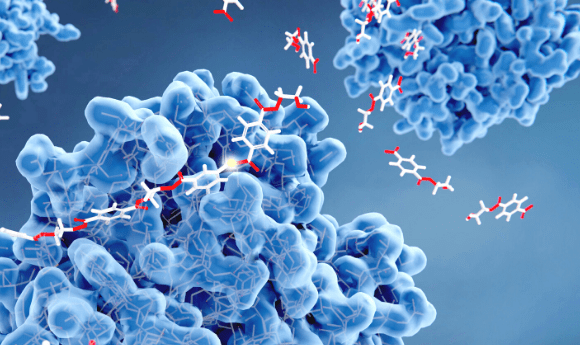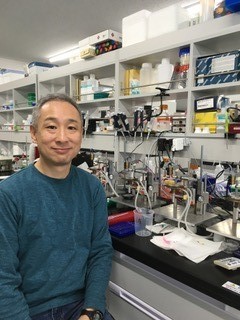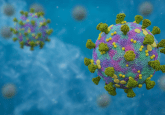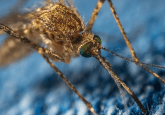Masumi Eto on a new method for the detection of kinase activity

Masumi Eto discusses his up coming BioTechniques article on kinase activity tagged (KAT) Western blotting.

Can you please introduce yourself and tell us about your institution?
My name is Masumi Eto. I’m a professor at the Okayama University of Science (Japan) in the Faculty of Veterinary Medicine.
Can you tell us about the article that you’re about to have published in BioTechniques?
We have tried to improve a nonradioactive method for detecting kinase activities. There are approximately 500 protein kinases and we need to discover how kinases are regulated. Right now, a standard method is to detect the specific phosphorylation site of a known kinase, which is an indicator of activity. Therefore, all we can currently analyze are known phosphorylation sites, but in reality, many of them have not been identified. If we can measure kinase activity quickly and directly, then we can potentially identify many more. One problem is that purifying kinases is not an easy task. What we did in the article was improve the classic technique: in-gel phosphorylation assay. In typical in-gel phosphorylation assays, the protein-mix is loaded onto the SDS-gel, re-natured in the gel and radioactive ATP is added to detect phosphorylation. This technique was established in the late ’80s; however, there are two problems. First, the outcomes cannot show which site is phosphorylated. Second, many of us have no way to access radioactive materials due to institutional regulations. We aimed to forgo the use of radioactive ATP and to try more specific techniques to acquire the data.
In our method, we ran the gels as usual, then brought them onto the Polyvinylidene fluoride membrane, as usual for Western blotting. Then on the blot, the kinase was re-natured and subsequently topped with a substrate, known to interact with our kinase of interest. We added the substrate as a recombinant protein on the membrane, then added ATP. With the addition of ATP, the renaturated kinases can phosphorylate the proximal site of the substrate. Once it is phosphorylated, we can detect the phosphorylation using a phosphorus-specific antibody. With this technique, radioactive ATP is not required and we can identify which sites and substrates are phosphorylated. In other words, we can control one specific kinase which we are interested in. If you have a substrate of interest and you are looking for the kinase, this technique, which we have termed kinase activity tagged Western blotting (KAT-Western blotting), will give you the ability to find the kinase and ascertain if it is active or not in various conditions in the cell.
- South, north, east and west-ern: the story of how the western blot came into being
- Choosing the right detection method for your western blot
- Western blot normalization: a faster, more reliable alternative to using housekeeping proteins
Do you have any advice for best practices when using those methods?
With KAT-western blotting, kinase activities in cell lysates can be determined. For example, when cell lysates are prepared under specific conditions; stimulated or stressed, kinase activation and inhibition under the conditions can be detected. KAT-western blotting will also give you information on each phosphorylation site that is phosphorylated by specific kinases.
There are a couple of limitations with these assays which were helpfully highlighted by the reviewers. If there are 500 kinases, are we sure that all the kinase can be re-natured? The answer to this is no. I trialed several kinases which were not published in the paper and discovered that some kinases cannot be activated. Meaning that there are limitations regarding whether a kinase is re-natured or not. The second problem is that after the kinase is detected, we can’t discern which kinase it is. We have information on the protein size and we know all the possible 500 genes. Therefore, we have the potential to deduce a group of kinases with similar molecular weights, but this is a limitation. We cannot pin down kinase identity using only our technique. One solution is that if you have a kinase of interest and if you have hypothesized the identity of the kinase, you can re-probe the blot using the kinase-specific antibody. This method allows you to confirm if this is the kinase you are interested in.
Can you tell me about your experience publishing with BioTechniques?
I’ve noticed certain BioTechniques papers are really focused on the technique and provide the essence of the technique, which was ideal for us as we didn’t want to include surplus data. BioTechniques is peer-reviewed, which is important to keep the quality high. I was hoping to publish quickly and gladly found that my expectations were matched by the process of the review. I didn’t request accelerated publication, but my reviews were returned in approximately 2 weeks. The editor asked me to revise in 2 weeks, which was not possible. I requested additional time and was told to take as long as was necessary. Once we finished the extra data, which was suggested by the reviewer, the revised paper was re-reviewed, and the result returned within 2 weeks. After this, it was accepted within a day or two, and I have just heard that my proof will be with me in another 2 weeks. That means that almost within 2 months, 2 reviews finished and then it will be published. It’s just amazing. I am very pleased that our paper is published in BioTechniques, which has been mailed to my previous office in US and now emailed to my Mac in Japan.
Keep an eye out for Masumi Eto’s article coming out in the April issue of BioTechniques.





